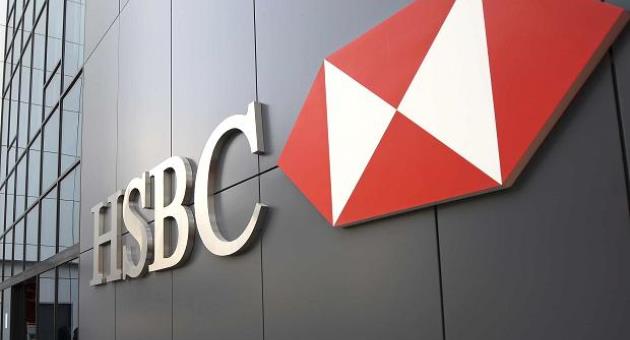Businesses across the world face a battle for talent as they look to unlock future growth opportunities through a hiring drive, according to new research from HSBC.
The findings reveal that stiff competition for talent means companies are having to diversify how they are attracting and retaining staff, as they seek to achieve their high growth ambitions over the next 12 months.
New insights from HSBC’s latest Navigator research, which polled over 2,100 business leaders from 10 global markets, found that companies expect their workforces to increase by an average of 13% in the next 12 months, with two in five (42%) businesses planning to increase headcount by 20% or more. However, companies are facing a battle for talent, with
seven in 10 (70%) globally planning to increase headcount, while just 12% of businesses plan reductions to their workforce.
Succeeding in the battle for talent will be crucial to driving long-term profitability. Three quarters (77%) of businesses see a ‘strong’ relationship between investment in workforce and profitability, as they target almost 20% revenue growth on average over the next 12 months. To take advantage of the growth potential, seven in 10 (69%) businesses are already investing in their workforce in some way, through hiring, upskilling, or training, with a further 28% planning to do so in future.
How to attract and retain staff: a narrowing gap between staff wellbeing and financial
incentives
As competition for talent intensifies, the research shows leaders are taking action and reacting to the demands of the workforce beyond financial incentives, placing strong emphasis focused on wellbeing and work-life balance factors when it comes to attracting staff. Despite salary and benefits still being perceived as the top factor in moving jobs by 46% of business leaders, factors such as flexible working policies (39%) and emphasis on employee physical, mental and financial wellbeing (36%) are set to become just as important for employees.
In response, business leaders are reimagining the future of the workplace and how they think
about empowering their employee base, with the research showing:
Remote working is here to stay: Two thirds (67%) see remote / hybrid working as crucial to enabling the enhancement of future growth, while just one in 20 (5%) businesses believe that they will not see any form of remote working in future;
Flexibility seen as big boost for wellbeing: Four in 10 (39%) business leaders believe offering staff a flexible working arrangement – where employees are able to choose freely where they work from – is a key driver for both attracting and retaining staff, with the potential positive impacts on employee wellbeing noted as the top benefit of a remote or hybrid approach;
As a result, the most popular future workplace option for businesses is a ‘fully flexible’ approach to remote working – where employees can freely determine whether they go into the office / are onsite – with a third of businesses (34%) planning to
implement this policy;
Barry O’Byrne CEO Global Commercial Banking at HSBC said “Global businesses face a battle for talent as they bid to grow by investing in people. Business leaders are responding by enhancing the ways in which they are attracting and retaining their people, including non-financial factors such as wellbeing, flexible working policies, and training and development.
“The pandemic has shifted work patterns and the expectation of what employees across the globe want from their jobs, so not only are businesses adapting their working arrangements and enhancing support for staff as part of their bid to attract top talent, but also to incentivise their staff not to look elsewhere. With the pandemic putting corporate purpose on centre
stage, we expect businesses to increase investment in their staff as they look to enhance and build their company cultures and workplace environments.”
Joyce Grech, Head of Commercial Banking at HSBC Malta said “Just like companies in other countries, Maltese businesses are recognising that talent needs to be retained and protected. This is no mean task and companies will need to adopt a novel approach to attracting and retaining employees, as they seek to achieve their growth ambitions over the coming months. Investing in their workforce in some way or other, maybe through upskilling, hiring fresh talent or training is the way forward as competition for talent intensifies.
Retention, just like the research highlights, will require leaders to take action and react to the demands of the workforce beyond financial incentives, whilst placing a stronger emphasis on wellbeing and work-life balance when it comes to attracting and retaining staff.”
Business leaders look to build their global presence through hiring
Across the regions, the biggest hiring sprees are expected to come from companies headquartered in India (80%), Mexico (80%) and the US (79%). Those hires are expected to come domestically primarily, although companies are also starting to look further afield for new talent and to grow their presence in other markets.
The survey found:
US businesses are planning to grow workforces in South America and Europe by one fifth per market (20% and 21%), while Indian businesses plan to grow by 25% in North America and 30% in Europe. Chinese businesses are also expanding beyond
domestic market, with headcount in Europe expected to grow by 39%, and 29% in North America.
Advertising and communications businesses are targeting the largest growth in their workforces, with nearly nine in ten (87%) planning to hire, and over half (53%) planning headcount increases of 30% or more. This compares to just 54% of
logistics/transportation businesses targeting increases, and 60% in retail.
Sustainability is an additional factor for businesses when attracting staff, with over a quarter of businesses (27%) globally noting that is important for the recruitment
process.










